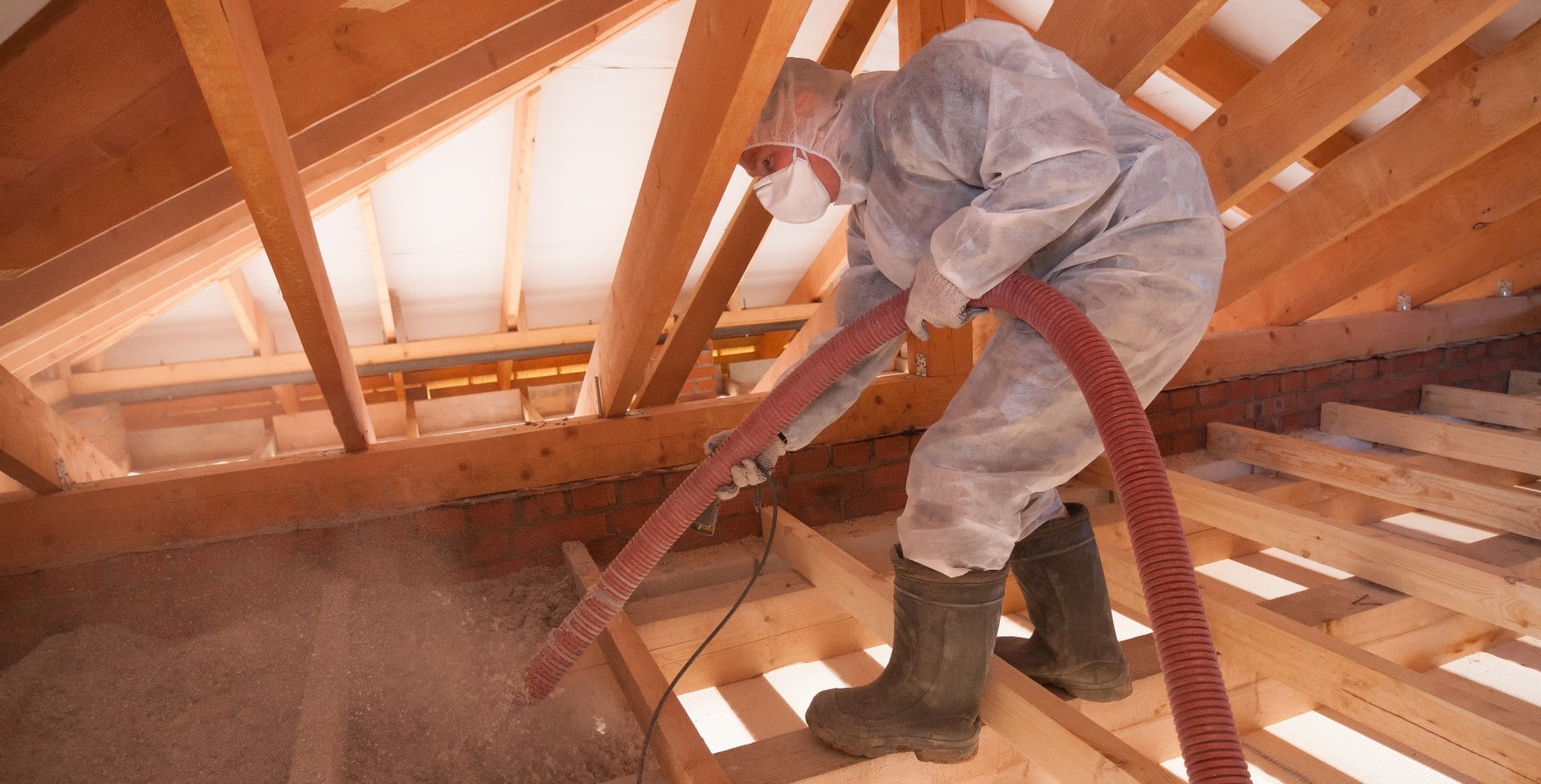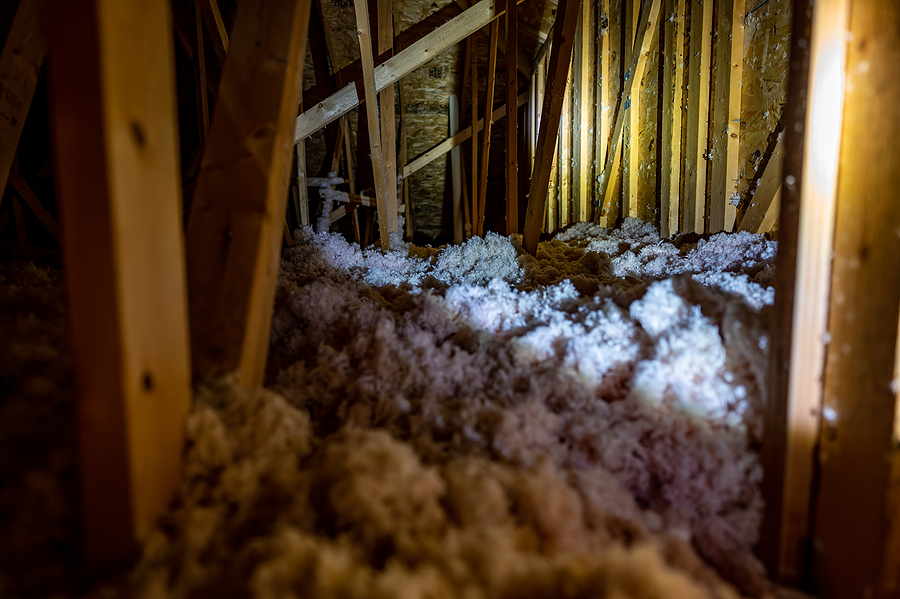Professional Tips for Enhancing Your Home with Attic Insulation DFW
Professional Tips for Enhancing Your Home with Attic Insulation DFW
Blog Article
Discover the Various Kinds of Attic Insulation and Their One-of-a-kind Benefits for Your Home's Energy Performance

Fiberglass Insulation
Fiberglass insulation is among one of the most commonly made use of products for attic insulation due to its exceptional thermal efficiency and cost-effectiveness. Made up of small glass fibers, this product properly traps air, producing a shielding barrier that helps maintain regular indoor temperature levels. Its high R-value per inch makes it especially efficient at standing up to warm transfer, which is crucial for energy conservation in homes.
Installment of fiberglass insulation is relatively straightforward, commonly offered in batts or loose-fill forms, suiting different attic arrangements. In addition, it is immune and non-combustible to moisture, lowering the danger of mold growth. This resilience adds to its durability, making fiberglass a practical long-lasting investment for house owners.
Additionally, fiberglass insulation is typically made from recycled products, which enhances its eco-friendliness. The material can additionally add to soundproofing, minimizing noise transfer between areas. While it is necessary to put on safety equipment during setup to stay clear of irritation from the fibers, the total advantages of fiberglass insulation, consisting of energy financial savings and environmental considerations, make it a preferred selection for improving attic room performance and promoting a comfy living setting.
Spray Foam Insulation
Spray foam insulation is a very effective option for attic room insulation, known for its exceptional air sealing and thermal efficiency. This cutting-edge insulation material is composed of a combination of isocyanate and polyol material, which, when integrated, broadens quickly to fill up voids and cavities in the attic room space. Its capability to stick to various surface areas ensures a continuous obstacle against air leaks, dramatically reducing warmth loss during cooler months and heat gain throughout warmer seasons.
Among the vital advantages of spray foam insulation is its high R-value per inch, which implies it provides superb thermal resistance in a relatively slim application. This is especially helpful in attics where area is often restricted. Furthermore, spray foam can assist lessen moisture accumulation, minimizing the danger of mold and mildew development, which can be destructive to both the structure and indoor air quality.
While the first price of spray foam insulation may be greater than conventional options, its lasting power cost savings, combined with boosted comfort and improved home worth, make it a rewarding financial investment for home owners looking for enhanced power effectiveness. Attic Insulation DFW. In general, spray foam insulation attracts attention as a reliable remedy for optimizing attic room insulation
Cellulose Insulation

Cellulose insulation is a prominent choice for attic insulation, mostly composed of recycled paper products treated with fire resistants. This ecologically friendly choice is recognized for its excellent thermal efficiency, efficiently decreasing warm transfer in both summer season and winter season. The thick structure of cellulose permits it to fill voids and voids in attic rooms, providing a smooth obstacle versus air leakages.
One of the considerable benefits of cellulose insulation is its capability to resist mold and bugs, owing to the fire resistant therapies utilized during production. Additionally, it boasts a high R-value per inch, which converts right into superior energy effectiveness. Homeowners can anticipate reduced heating and air conditioning prices as an outcome of boosted insulation.
Installment is typically completed through blowing loosened cellulose right into the desired area, permitting a reliable and quick procedure. This technique likewise decreases interruption to the existing framework. Cellulose insulation has a relatively reduced ecological impact, as its manufacturing procedure utilizes recycled materials, check over here adding to lasting building techniques.
Rock Woollen Insulation
Among the numerous choices for attic room insulation, rock wool, additionally referred to as mineral woollen, stands apart due to its excellent thermal and acoustic efficiency. Made from all-natural or recycled products, rock woollen is developed by melting rock and spinning it into fibers, resulting in an item that offers exceptional insulation residential or commercial properties.
Among the significant benefits of rock woollen insulation is its high R-value, which shows its performance in withstanding heat flow. This characteristic not just enhances energy effectiveness however additionally adds to preserving a comfy interior temperature level year-round. Additionally, rock woollen is inherently fireproof, making it a much safer option for homes as it can withstand high temperatures without melting or launching hazardous fumes.
Furthermore, rock woollen insulation masters soundproofing capabilities, effectively lowering sound transmission in between areas and from outdoors sources. This makes it a perfect selection for home owners seeking a peaceful living environment. In addition, rock wool is moisture-resistant, assisting to stop mold development and keeping the architectural integrity of the attic room. Generally, rock woollen insulation gives a detailed solution for improving energy performance, safety, and comfort in household setups.
Radiant Obstacle Insulation
Radiant obstacle insulation functions as an efficient remedy for decreasing warmth you could look here transfer in attic rooms, particularly in warmer environments. This kind of insulation jobs by reflecting induction heat far from living areas, consequently reducing the amount of heat that enters a home throughout warm weather condition - Attic Insulation DFW. Normally composed of a highly reflective material, such as aluminum foil, glowing obstacles are installed in attics, facing the roof covering, where they can intercept incoming warm from the sunlight
The main benefit of glowing obstacle insulation is its ability to reduced cooling expenses. By mirroring warmth as opposed to absorbing it, glowing barriers can assist keep an extra steady interior temperature, decreasing the workload on air conditioning systems. This efficiency translates into lower power costs and increased comfort for home owners.
In enhancement to energy financial savings, radiant barriers can additionally add to boosted interior air high quality. By decreasing heat build-up, they assist minimize moisture degrees, which can avoid mold and mildew growth and improve overall air blood circulation. When set up correctly, radiant obstacle insulation can be an indispensable addition to any kind of energy-efficient home, making it a worthy consideration for property owners wanting to enhance their attic Discover More Here room insulation strategy.
Verdict
Finally, comprehending the various kinds of attic room insulation-- fiberglass, spray foam, cellulose, rock wool, and radiant barriers-- allows property owners to make informed decisions pertaining to energy effectiveness. Each insulation kind presents special benefits, such as superior thermal resistance, dampness management, and audio depletion. By selecting the appropriate insulation product, substantial decreases in power prices can be accomplished, in addition to enhancements in indoor comfort. Eventually, the appropriate option adds to a much more sustainable living environment and advertises overall energy conservation.

In conclusion, recognizing the different kinds of attic insulation-- fiberglass, spray foam, cellulose, rock wool, and radiant barriers-- allows home owners to make educated decisions concerning energy effectiveness.
Report this page